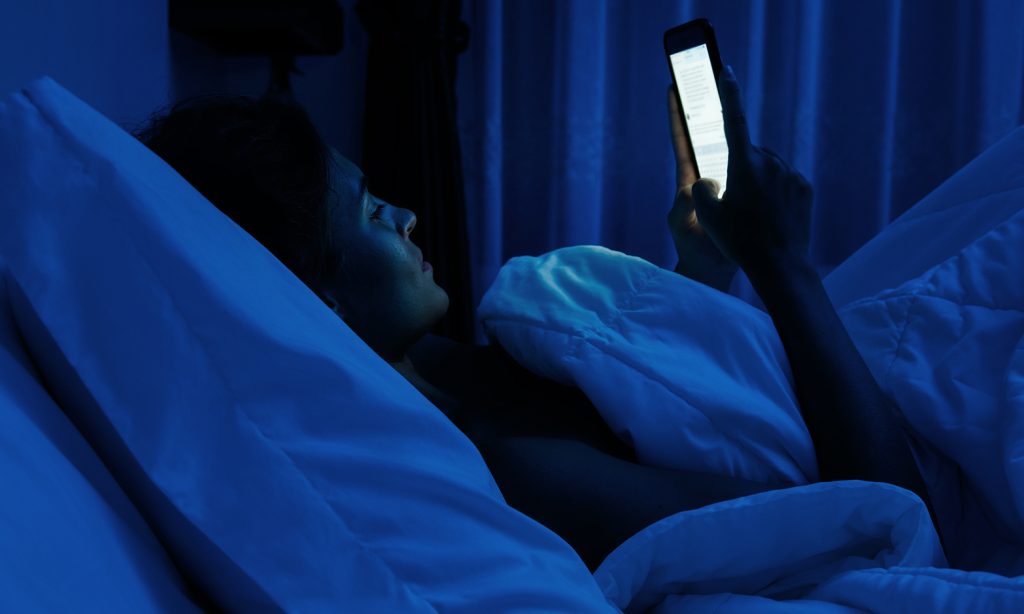Have you ever wondered what impact that laptop screen, smart watch or iPad or even TV was doing to your health at night time?
Have you woken up in a funk and thought – this isnt great, but cant tune out or turn off your stories before bedtime?
Researchers have conducted a study of more than 13 million hours of data collected from light sensors worn by 89,000 people and have found exposure to bright nights and dark days is associated with an increased risk of death.
Researchers investigated whether personal day and night light and lighting patterns that disrupt our circadian rhythms predicted mortality risk.
Published in the journal Proceedings of the National Academy of Sciences, the results show that those who were exposed to high levels of light at night had a 21–34% increased risk of death, whilst those exposed to high levels of daylight had a 17–34% reduction in their risk of death.
“Exposure to brighter nights and darker days can disrupt our circadian rhythms, a disruption that is known to lead to various health issues including diabetes, obesity, cardiovascular disease, mental health issues and increase the risk of death,” says senior author and sleep expert Professor Sean Cain from Flinders University.
“These new insights into the potential adverse impact of light have shown us just how important personal light exposure patterns are for your health.”
Co-senior author, Associate Professor Andrew Phillips says that light exposure at night disrupts circadian rhythms by shifting the timing (phase-shift) and weakening the signal (amplitude suppression) of the central circadian ‘pacemaker’ which orchestrates circadian rhythms throughout the body.
“Disruption to the body’s circadian rhythms is linked to the development of metabolic syndrome, diabetes, and obesity and is also strongly implicated in the development of cardiometabolic diseases including myocardial infarction, stroke and hypertension,” says Associate Professor Phillips.
“The observed relationships of night light exposure with mortality risk may be explained by night light disrupting circadian rhythms, leading to adverse cardiometabolic outcomes.
“Our findings clearly show that avoiding night light and seeking daylight may promote optimal health and longevity, and this recommendation is easy, accessible and cost-effective,” adds Associate-Professor Phillips.
The study authors, from FHMRI Sleep Health, examined the relationship between personal light exposure and all-cause and cardiometabolic mortality risk in 89,000 UK Biobank participants, who were between 40 and 69 years old. Metrics were recorded with wrist-worn sensors, and participant mortality was captured by the National Health Service over a follow-up period of approximately 8 years.
Sleep duration, sleep efficiency, and midsleep were estimated from motion data, while cardiometabolic mortality was defined as any cause of death corresponding to diseases of the circulatory system, or endocrine and metabolic diseases.
The research also showed a disrupted circadian rhythm predicted higher mortality risk, which the authors were able to determine using computer modelling. Findings accounted for age, sex, ethnicity, photoperiod, and sociodemographic and lifestyle factors.
Lead author, Dr Daniel Windred says that the findings demonstrate the importance of maintaining a dark environment across the late night and early morning hours, when the central circadian ‘pacemaker’ is most sensitive to light, and seeking bright light during the day to enhance our circadian rhythms.
“Protection of lighting environments may be especially important in those at risk for both circadian disruption and mortality, such as in intensive care or aged-care settings,” says Dr Windred.
“Across the general population, avoiding night light and seeking day light may lead to reduction in disease burden, especially cardiometabolic diseases, and may increase longevity.”
One wonders if wearing a smart watch to track your sleep patterns is really doing you a benefit or harm… food for thought!
ACADEMIC RESOURCES:
The article, ‘Brighter nights and darker days predict higher mortality risk: A prospective analysis of personal light exposure in >88,000 individuals’, by Daniel P. Windred, Angus C. Burns, Jacqueline M. Lane, Patrick Olivier, Martin K. Rutter, Richa Saxena, Andrew J. K. Phillips and Sean W. Cain was published in Proceedings of the National Academy of Sciences (PNAS) journal.DOI:10.1073/pnas.2405924121
Flinders University would like to acknowledge: This research has been conducted using data from UK Biobank, a major biomedical database (Project ID: 6818). M.K.R. was supported by the NIHR Manchester Biomedical Research Centre. D.P.W. was supported by the Australian Government Research Training Program and the Australian Research Council (DP210102924 and DP220102812).
Robert is the founder of AustralianSenior.com.
He studies Journalism and Communications at USC and studied TV Presentation at NIDA. He is passionate about advocating for seniors and presenting non-biased, fact-based news to enable those over 50 to thrive in an increasingly complicated digital world. He covers all areas of life and style, from pop culture to the economy, travel, and events with a passion for supporting rural and regional destinations and opportunities. If it's worth reading, it's worth writing about.
He loves to travel the globe and is a recently diagnosed, late-in-life Type One Diabetic.


